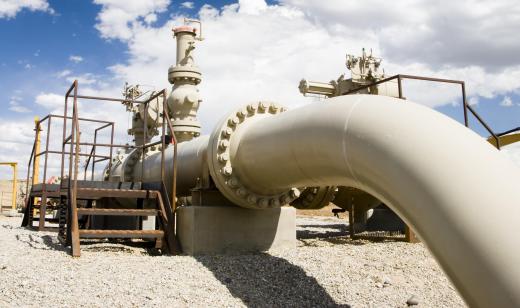A flow transmitter is a device used as a means of measuring the flow of a specific substance, usually liquid, through a series of pipelines or tubing. These measurements begin as electrical signals, measuring anything from the volume of substance being pushed through the pipeline to the speed at which the fluid is moving. The measurements are converted from electrical signals by the flow transmitter and sent to a designated receiving agent, such as a computer or an automated control station. They are then translated by the flow transmitter to allow control operators to visualize the amount of liquid being transferred through pipelines in order to regulate the flow and ensure that the proper volumes are being transported at all times.
There are many different applications in which a flow transmitter may be required, especially in cases where a flow meter is installed on a piping series but the meter is not clearly accessible to the operator. A flow transmitter may be installed in conjunction with the flow meter to transmit the results the flow meter produces to the control station manned by the operator. This allows the operator to ensure that the correct amount of volume, flow rate, temperature, and pressure of the material being transferred through the pipeline is maintained.

These applications may be used in laboratories where specific materials must be introduced to one another at a controlled and specific rate. Such transmitters may also be useful in underground pipeline systems, where water volumes to public sources must be monitored for usage and pressure changes. Any time a liquid material needs to be transferred from one medium to another through a controlled piping process, a flow meter and flow transmitter may be implemented to ensure that the material is being transferred effectively and in the correct amounts.
There are three basic types of flow transmitters that may be used at any point in a transfer process. They are referred to as volumetric, mass, and velocity. Volumetric information allows the operator to determine the amount of volume the material is being transferred in, and whether or not the volume of the flow is within the regulations for the specific piping system. Velocity refers to the speed at which the material is moving through the piping system. Mass refers to the amount of mass the material being transferred creates as it is sent through the piping system, allowing the operator to control the stress the piping system may be put under by the amount of material being sent.
